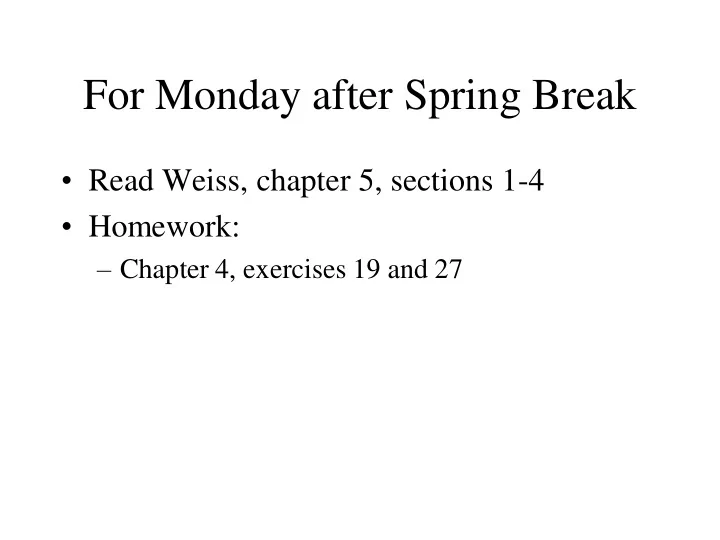

For Monday after Spring Break • Read Weiss, chapter 5, sections 1-4 • Homework: – Chapter 4, exercises 19 and 27
Paper 1 • Any questions?
Splay Trees • Interested in the cost of a sequence of search operations rather than the cost of a single search. • We want to make sure that the amortized cost of M search operations is M log N.
Basic Idea • When we find a node, we’re going to rotate it to the top in a way that helps to balance the tree if it is currently unbalanced.
Cases • Found node has no grandparent: rotate node and root • Found node has a grandparent: – zig-zig case (parent is same side of grandparent that node is of root): rotate node and grandparent – zig- zag case (node’s value is in -between value of parent and grandparent): do a standard AVL double rotation
Comparison • Splay trees and AVL trees
External Dictionaries • We’ve talked so far about dictionaries small enough to reside in memory • However, many applications require dictionaries much larger than will easily fit in memory • Biggest issue for external dictionaries is the number of disk accesses required for an operation • Each disk access retrieves a block of memory
m-way Search Trees • Empty tree or • Each internal node has up to m children and between 1 and m-1 elements • A node with p elements has exactly p+1 children • Elements are ordered
B-tree of Order m • an m-way search tree • If non-empty – The root has at least two children – All internal nodes other than the root have at least ceiling of m/2 children. – All external nodes are at the same level • Thus we have guarantees on the height of the tree • Book technically covers structure called B+-tree — items in internal nodes also appear in external nodes
Operations • Searching • Insertion • Deletion
Recommend
More recommend